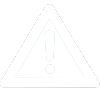Level 2
As an introduction to the plaster cast series, you will start with the eye. You will observe and learn the structure and form of the eye and further develop your process for blocking and refining your drawings.
You will learn how to draw and render one of the most expressive features of the face; the Lips. You will learn techniques to better describe the forms of the mouth on a 2-dimensional surface using clear shadows and modeling the subtle forms of the lips with halftones.
You will analyze and render the forms of the nose, starting with the simple pyramid shape and working towards the smaller forms that define the structure of the nose.
You will learn how to draw and render the ear, breaking down the complex forms and understanding the process of identifying and rendering the cast shadows of the ear and the subtle variations in halftones.
You will be introduced to the forms and anatomy of the head as it occurs in life. You will break down and analyze the complex forms of the features, using your knowledge from the previous lessons.
You will learn an alternative method of blocking in the features to emphasize the round forms of the face. You will build upon what you’ve learned from the previous lessons and explore rendering the subtle features of the Early Renaissance Bust.
As an introduction to Drapery: The Russian Approach, You will start with the Pipe Fold. You will take your knowledge of rendering cylinders and apply that to rendering fabric. You will learn how to render fabrics of different materials and local values.
You will learn how to analyze and draw the Diaper Fold taking what you know from the previous lesson and applying it to rendering fabric that is changing direction. You will learn how to identify the “eyes” of the fold and use that knowledge to construct the Diaper Fold
Similar to the Diaper fold, you will learn how to compare what you’ve learned from the previous lesson and apply new information to construct and render the Half-Lock Fold.
In this lesson, you will draw and analyze two different types of Zig-Zag folds; the hanging Zig-Zag Fold and the Zig-Zag Fold placed around a form. You will learn the similarities of the Zig-Zag Fold to the Half-Lock Fold and how to describe form underneath fabric.
Similar to the Zig-Zag Fold placed over a form, you will continue to develop your ability to describe the form of an object underneath fabric, paying special attention to occlusion shadows created by the spiral fold.
You will learn how to analyze, draw, and simplify inert cloth or cloth without a distinct fold or movement. You will take your knowledge of rendering forms, cast shadows, and occlusion shadows from previous lessons and use it to describe this kind of fold.
In this final lesson, you will take everything you’ve learned in the course and apply it to drawing a draped figure. You will take your knowledge of drawing fabric and use it to edit and design the draped figure for simplicity and composition.

 UPDATE! October 1st, 2023: This version of the website will no longer receive updates. Please transition to the new website for the best experience.
UPDATE! October 1st, 2023: This version of the website will no longer receive updates. Please transition to the new website for the best experience. 


































CONNECT
New Masters Academy
16182 Gothard St
Huntington Beach, CA 92647
Contact US